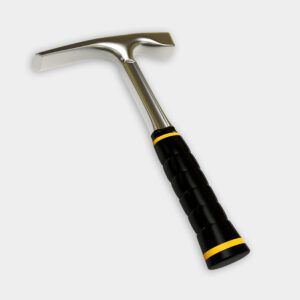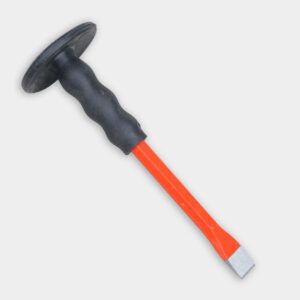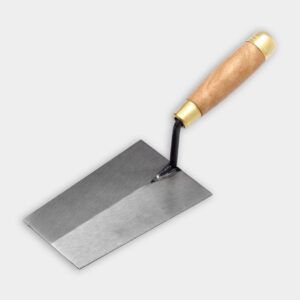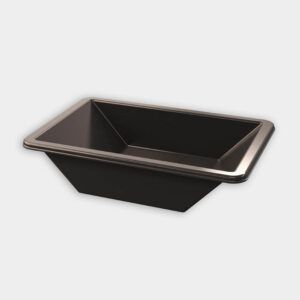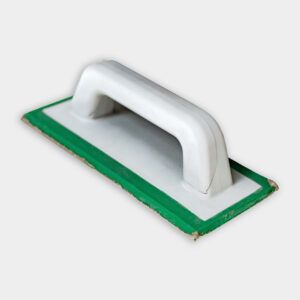We may be compensated if you purchase through links on our website. Our team is committed to delivering honest, objective, and independent reviews on home products and services.
Project details
Skill
Cost
Estimated Time
A sinking driveway can be more than just an eyesore—it can pose safety risks and potentially damage your vehicles. Fortunately, repairing a sinking driveway, particularly one with a drywell, is a manageable DIY project for many homeowners.
In this guide and accompanying video, This Old House expert Mark McCullough shows a homeowner how to fix a sinking drywell in their driveway, demonstrating key techniques and offering valuable insights along the way.
*Cost information in this article sourced from estimates used by HomeGuide.
Signs You’re Facing a Sinking Driveway
Recognizing the signs of a sinking driveway early on can prevent more severe damage to your property. Look out for the following indicators:
- Cracks are forming, particularly around the recessed area
- Difficulty in driving over certain sections
- Visible depressions in the driveway surface
- Water pooling in specific areas
Assessing the Situation
Before beginning any repair work, it’s crucial to assess the extent of the problem.
Here’s how to do so:
- Inspect the entire driveway for signs of sinking or settling
- Check the grade around the drywell to ensure proper water flow
- Examine the drywell itself for any visible damage or deterioration
- Test the drainage capabilities of the drywell
McCullough notes that the drywall is still draining effectively despite its sunken state, which is a positive sign for the repair process. However, it’s essential that the water flows properly into the drywall and does not get trapped elsewhere, which could exacerbate the problem.
Preparing for the Repair of a Sinking Driveway
Proper preparation is fundamental to a successful drywell repair. Gather the following tools and materials:
- Asphalt patch
- Bricks
- Chipping hammer
- Crushed stone
- Garden hose and nozzle
- Masonry chisels
- Masonry trowel
- Mortar mix
- Mortar tub
- Safety glasses
- Small mason’s float
- String line
Step-By-Step Driveway Drainage System Repair Process
Remove the Grate and Debris
The first step is to remove the grate from the drain.
- Clear out all debris, including leaves, dirt, and sediment.
- Inspect the interior of the drywell for any obvious issues.
This initial step is crucial for understanding the depth and nature of the problem. Removing debris clears the workspace and allows you to see any hidden damage that might need addressing.
Expose the Frame
To access the underlying structure:
- Put on safety glasses.
- Use a chipping hammer and masonry chisel to remove the asphalt around the grate frame carefully.
- Remove approximately 6 inches of asphalt surrounding the drain.
- Once the lip of the frame is exposed, carefully lift it out of the hole.
Exposing the frame can be labor-intensive, but taking the time to do this step properly ensures you won’t miss any critical issues.
Inspect and Clean
After exposing the frame, take the following inspection and cleaning steps:
- Remove any loose asphalt and dirt with a masonry trowel.
- Take out any broken or deteriorated bricks.
- Thoroughly clean the exposed area, using a garden hose to rinse away the remaining debris.
A clean workspace is essential for the repair’s longevity. Thorough cleaning allows for better adherence to new materials and ensures that no old, damaged parts compromise its integrity.
Rebuild the Grate Setting
Now, it’s time to rebuild the structure. Here’s how:
- Mix the mortar according to the manufacturer’s instructions.
- Lay a bed of mortar over the existing bricks.
- Set new bricks into the mortar, tapping them down with the butt of the masonry trowel.
- Ensure you stagger the joints between bricks and maintain a consistent height.
- Apply mortar to the inside, outside, and top of the bricks for added strength.
Proper mortar mixing and brick placement are crucial for the new structure’s stability. Follow the manufacturer’s instructions closely and check your work frequently for consistency.
Reinstall the Grate Frame
Now it’s time to position the grate frame.
Take these steps:
- Place the grate frame on top of the new brick setting.
- Use a string line stretched across the hole to ensure proper height.
- Aim for approximately 2 inches of space between the top of the frame and the string line.
- This spacing allows for adequate drainage without creating a depression that is too deep.
Ensuring the correct height for the grate frame helps maintain an even driveway surface and promotes proper water drainage, prolonging your repair’s lifespan.
Securing and Finishing
Follow these final steps to complete the repair:
- Apply a bed of mortar around the outside of the grate frame to anchor it.
- Pour crushed stone around the outside of the ring and tamp it down.
- Fill the area around the grate ring with an asphalt patch.
- Use a mason’s float to press and tamp the asphalt into place.
- Smooth the asphalt, tapering it towards the drain.
- Replace the grate.
Confirm that the asphalt patch blends smoothly with the surrounding driveway to create a seamless finish. Proper tamping and smoothing are essential for a professional-looking and durable repair.
Aftercare and Maintenance of Your Driveway
Proper aftercare is essential for the longevity of your repair:
- Allow the repaired area to set for about two weeks before driving over it.
- Inspect the repaired area periodically for any signs of settling or damage.
- Regularly clean the drywell grate to prevent debris accumulation.
- Seal the entire driveway to protect the repair and improve the overall appearance.
Regular maintenance activities, such as cleaning and sealing, are small efforts that can result in significant long-term benefits for your driveway.
Preventing Future Drainage Issues
To avoid future driveway sinking:
- Ensure proper grading around your driveway to direct water away from the structure.
- Obtain professional inspections every few years to catch potential problems early.
- Regularly maintain your driveway, addressing small cracks or issues promptly.
- Use quality materials designed to withstand local weather conditions.
Preventive measures can save you considerable time and money by mitigating the risk of future repairs. Often, a little proactive care goes a long way.
When to Call a Professional To Repair Your Sinking Driveway
While many drywell repairs can be DIY projects, some situations—such as those listed below—may require professional help:
- Drainage problems that extend beyond the drywell itself
- Extensive settling or sinking across large areas of the driveway
- Lack of confidence in performing the repair safely and effectively
- Signs of significant structural issues beneath the driveway
We strongly recommend hiring a licensed and reputable contractor for extensive or complex issues. If you’re unsure about any part of the repair process, don’t hesitate to seek expert advice.
Our Conclusion
By following the steps outlined and taking proper precautions, you can restore your driveway’s functionality and prevent future issues. Remember to assess the situation carefully and don’t hesitate to call a professional for more complex problems.
Resources
McCullough raised a drywell in a driveway that sunk below grade. After using a chipping hammer and chisel to break away the sunken asphalt, McCullough removed the grate and added gravel. He used EZ Street ready-to-use asphalt and ProMasonry Type S Mortar mix to level out the drywell.

